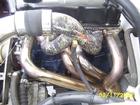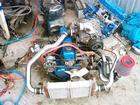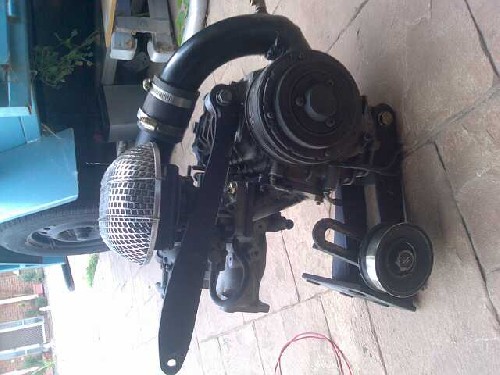Forced Induction comes in two forms: Supercharging and Turbo-supercharging. Both work well in a Datsun 1200!
Contents |
Overview
Also see: * Turbo * SC14
discussion: s/charged a14
One thing to remember is that a method that works well isn't the only good way.
Wuote: Forced induction. This is a subject that was vigorously & robustly debated in an extensive thread not so long ago, so have a play with the search function & you will likely find it. Myself, & a few others prefered the ability of the positive displacement blower to deliver high levels of torque, almost instantly, at very low engine speeds, while a large number of others prefered the advantages that a turbo offers at higher engine speeds. The turbo debate was further broken down into blow through versus suck through. See if you can find this thread & have a read through it all. With some luck ou will gain an insight of the advantaged & disadvantages offered by each system.
The big discussion: regarding Turbocharging A12. Caution: difficult reading in that discussion.
Supercharging vs. Turbocharging -- what's better?
Turbocharging generally makes more power as the engine revs higher. So does centrifugal supercharging (paxton, etc).
By contrast, a rootes-type blower, twin-charger or screw-charger makes power all through the RPM range and so makes the engine feel like a larger displacement engine. It also does not suffer from lag like a turbo does.
 B&M blown A14 (rootes-type supercharger)
B&M blown A14 (rootes-type supercharger)
 B&M supercharged NAPS-Z engine (rootes-type blower)
B&M supercharged NAPS-Z engine (rootes-type blower)
 Centrifugal supercharger (belt-driven turbine)
Centrifugal supercharger (belt-driven turbine)
 Compound Supercharging concept
Compound Supercharging concept
Draw-through vs Blow-through
You can put the carburetor before the blower (draw-through) or after the blower (blow-through).
Intercooler
An intercooler can result in far more HP, but requires a blow-through system (boxed carburetor) or EFI port injection. This is because for safety you don't want air-fuel mixture going through the cooler.
Boost pressure
- 6-7 psi is what a lot of OEM applications use.
- 10 psi should be possible with a stock A12/A14
- 14.7 lbs gives theoretically double the airflow so max. power would be about 2x stock, but this isn't actually the result. The reason is that the stock induction and exhaust system won't flow this much air under pressure. However, the low rpm torque could approach 2x (at about 2250 rpm) if a small blower is used. So a 130hp forced induction engine will have much more performance than a 130hp NA engine
Induction and Exhaust
Obvious, for more airflow, a higher flowing carb, intake, heads (ports and valves) and exhaust system is beneficial.
Supercharging will increase power on a stock engine, but increasing the airflow capability of the engine will bring your blown engine to its full potential.
Setups
suppafatto
Toyota SC14 is every popular

Toyota SC14 blower oval port lo-comp head watermeth injection hi energy ignition manifolds to suit oval port 32/36 Weber DGV carburetor

![[Datsun 1200 encyclopedia]](/wiki/upload/wiki.png)

